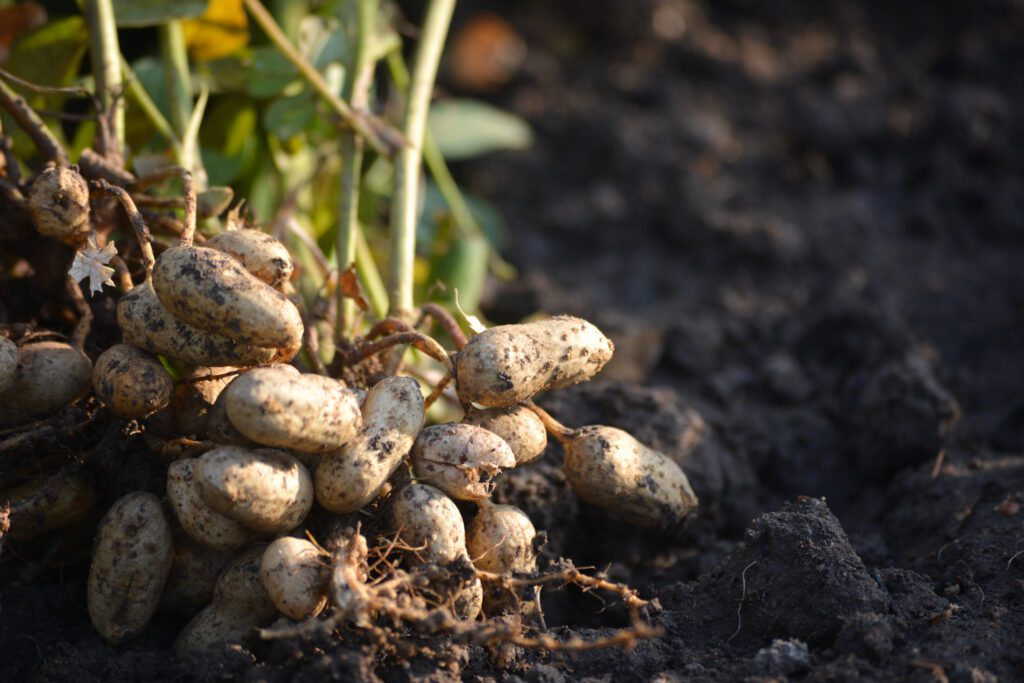by RYAN MILEJCZAK
Sponsored by Farm Credit of Central Florida
Peanuts are one of the South’s most emblematic crops. Rich in protein, fat, fiber, and other essential nutrients, peanuts can be enjoyed roasted, as peanut butter, boiled, or used in classic recipes, to name just a few uses. And though you might not know it, Florida is a major producer of this crop.
Despite the name, peanuts (Arachis hypogaea) are actually legumes in the family Fabaceae, related to peas and beans. Like other fabaceous crops, they harbor symbiotic nitrogen-fixing bacteria in their roots, which improve soil fertility and make them a handy part of good crop rotation. Crop rotation refers to growing different crops in the same area across different seasons, preventing nutrient depletion and reducing pressure from pests and weeds. Notably, peanuts are one of the few plants that display geocarpy, meaning that its seeds develop underground (hence one of the peanut’s other common names, the groundnut).
The peanut originally hails from South America and was domesticated in the Andean region. After European explorers discovered the New World, they brought peanuts back to Europe, and peanut cultivation then spread to Europe before making their way back to the United States. But for much of their early history, peanuts were primarily used as feed crops for livestock. It wasn’t until the 20th century that they became a popular foodstuff, thanks in part to the efforts of George Washington Carver, who greatly popularized its cultivation in the South. This benefited southern farmers greatly, allowing them to restore nutrients to soil after extensive cotton cultivation left it barren. Carver’s contributions to peanut science were extensive, but perhaps his most well-known contribution is popularizing peanut butter at the 1904 World’s Fair in St. Louis.
In modern times, peanuts are extensively cultivated in the American South. Florida ranks fourth in U.S. peanut production, behind Georgia, Alabama, and Texas. Peanut production in our state has been steadily increasing in recent years, with 165,000 acres of peanuts planted statewide as of 2024, most of which occurs in the panhandle. Altogether this amounts to more than 500 million pounds of peanuts. From 2021 to 2022, total value of peanut production in Florida increased 9% to $147 million.
Due to the need for extensive frost-free days, the Florida climate is excellent for peanut production. Peanuts are typically planted in springtime when soil temps begin to warm, usually using peanuts from the previous year’s crop. When harvest time comes, the plants are dug out of the soil and in most cases, allowed to dry. Peanuts need to reach 10% moisture or less before storage. Alternatively, peanuts that are not dried are sold as “green” peanuts, and primarily used to make boiled peanuts.
Once sufficiently dried, peanuts are ready to be processed. They can be roasted for consumption, used in candies and other snacks, processed into oil or flour, or processed to be used as seed for the next season. But, the vast majority of peanuts produced in Florida and elsewhere are used to make peanut butter. In fact, a full 75% of Florida peanuts are processed into peanut butter, which accounts for about half of all US peanut consumption.
However you enjoy them, peanuts are a nutritious and delicious treat that provides plenty of nutrients, including E and B vitamins, poly and monounsaturated fats, fiber, and more. In fact, studies suggest that eating 1.5 oz of peanuts daily can help reduce the risk of heart disease. So however you like to enjoy them, you can feel good eating Florida peanuts.

